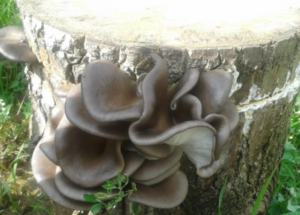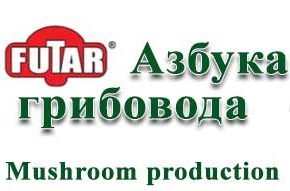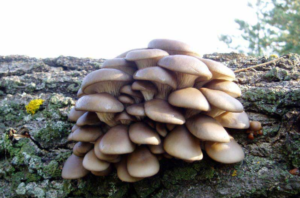 There are two basic technologies of mushroom cultivation: extensive and intensive. Extensive technology is widely practiced in Italy, France, Germany and Asia. It involves the cultivation of mushrooms in a natural environment, mainly on hardwood (stumps and logs).
There are two basic technologies of mushroom cultivation: extensive and intensive. Extensive technology is widely practiced in Italy, France, Germany and Asia. It involves the cultivation of mushrooms in a natural environment, mainly on hardwood (stumps and logs).
Due to the small harvest volume it does not give impressive business results, but has been used successfully in amateur mushroom growing. This technology has a seasonal character (harvest occurs in autumn and spring), and the level of the harvest depends on environment and climatic conditions. At the same time maintenance and expense rate is minimal, no special knowledge or skills are required, and therefore it is ideal for beginners mushroom growers.
The “Futar” company produces quality mycelium on wooden plugs of the following wood-destroying fungi:
oyster mushroom species:
- common oyster mushroom
- blue oyster mushroom
- lemon oyster mushroom
- king oysters (trumpet mushrooms)
honey agaric mushroom species:
- poplar mushrooms
- nameko mushrooms
- white beech mushroom (marble mushroom)
- winter mushroom
- summer honey agaric
medicinal mushrooms:
- shiitake
- maytake
- reishi
AND
- Latipurus, Judas ear mushroom, hericium mushroom
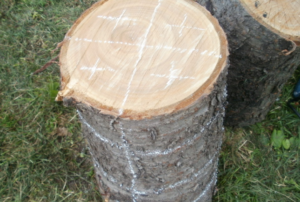 In this article, we’ll show you how to properly inoculate wood logs using mycelium sticks and provide photos of the whole process:
In this article, we’ll show you how to properly inoculate wood logs using mycelium sticks and provide photos of the whole process:
The suitable material is hardwood and fruit tree wood with bark and without branches. Bark must be intact and thick, because it prevents the moisture loss and protects from competitor fungi species.
Dimensions of logs may be different, but for convenience, the preferred length is 30-50 cm and 20-50 cm diameter. The thicker the log, the longer it will fruit.
You cannot use conifer wood species, as the resin present in them, supresses the growth and development of the mycelium. Fresh wood is suitable, with no apparent signs of foreign fungi infection. When using a dry wood it should be pre-soaked in the water for 2-3 days.
The prepared log should be drilled in a staggered order. 20 holes for the entire log surface with a diameter of 10 mm and 5-6 cm deep will be sufficient. You should not affect the wood core while drilling.Clean and closed area free of drafts and winds would be ideal for mushroom logs planting.
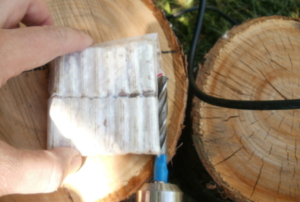
Mycelium wooden plugs do not require soaking in water! They should be removed from the plastic bag one by one, inserted into the holes and closed with modeling clay or wax. During planting prevent the debris and dirt from falling on the wood surface.
The mycelium grows faster in a controlled microclimate rather than under natural conditions, so logs spawned with mycelium should be put to colonize in a humid place in a room protected from drafts and direct sunlight (basement, barn, etc.).
The top of wood logs should be covered with wet burlap or they should be placed in a black plastic bag with holes. Favorable conditions for mycelium growth are constant humidity and temperature of 12-32°C for the entire colonization period. The lower the temperature, the slower the overgrowth and vice versa. When the air temperature is 20-30°C it takes the log 2-3 months to become colonized completely. At 14°C it becomes colonized in 5-6 months, at 12°C – in 8-12 months. When the substrate temperature (not the air temperature!) is above 34°C the mycelium can be lost.
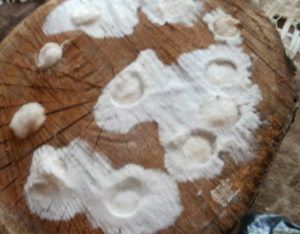
Logs are colonizing if there are traces of mycelium visible on the surface at the inoculation site. When the timber is completely covered with a fine net of mycelium, the logs are fully colonized and ready to be moved to a permanent place for fruiting. Period from spring to autumn is optimal for “planting” of spawned logs in the soil.
Mushrooms do not like direct sunlight, therefore place for logs should be shaded and moist (under the trees, bushes or in the shade of the roof). The log should be put into the hole, 2/3 of its length in the soil, while he bottom of the hole should be covered with moistened leaves, sawdust or straw. The top of the log should be covered with moist straw. The optimum temperature for fruit bodies formation – is from 10° to 15°C.
In dry hot weather, the planted stumps and logs and the soil around them should be watered daily, in winter they should be covered with leaves or straw in order to protect them from frost.
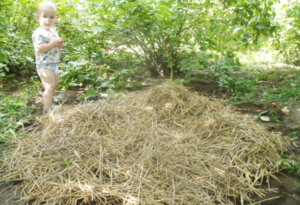
Under favorable conditions (daytime temperature of 16-20°C and night temperature – 6-12°C, humidity 80%) primordia start to appear. They resemble millet grains, in small groups (the initial cluster can have about 100 primordia. Within 18-20 hours, you can see caps, and after 20-40 hours (depending on weather conditions) there should be mushrooms ready to collect.
Mushrooms will grow for several years in the damp, rainy weather until the complete destruction of the log (from 3 to 7 years depending on the wood density). In long fall season harvest can be collected several times. In nature, the yield depends on weather conditions and is about 15-30% of the stump weight.
The disadvantage of this technology is a seasonal harvest and dependence on weather conditions, and the inability to use it for commercial purposes.
